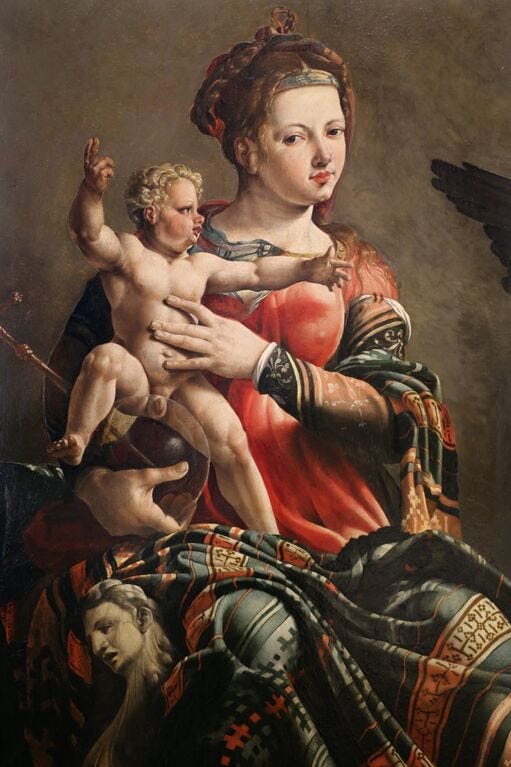This one is another book checked out from the local library, during my summer hometown visit.
Is it for that reason that once again I feel the need to go personal and — worse — sentimental?
The fiction stacks were the place of my literary upbringing, and Joyce Carol Oates had an important place in that milieu. But it wasn’t from her body of work in particular. Indeed, this is the first JCO book I’ve read cover to cover!
Rather, it was her edited anthologies, most importantly the Oxford American Short Stories collection from 1992. She was in effect a curator of American letters. Her reputation precedes: incredibly prolific and respected all through the second half of the 20th century (and as a master Twitter poster). And at the same time, an author in touch with pulp genres (up to Stephen King and Anne Rice levels of popularity), with her stories appearing regularly in mystery-thriller-horror venues.
Haunted gets off the ground splendidly with the opening titular story, about two neighbor girls, tomboyish and in a stormy friendship, who like to explore the derelict country houses. “I asked my mother if the houses were haunted and she said, Of course not, there aren’t such things as ghosts, you know that. […] Girls are prone to such trickery, it’s a form of camouflage, when every other thought you think is a forbidden thought and with your eyes open staring stightless you can sink into dreams that leave your skin clammy and your heart pounding — ”
And continuing into a breathless clause that marks this character’s writing voice: “dreams that don’t seem to belong to you that must have come to you from somewhere else from someone you don’t know who knows you.”
JCO is great at injecting the touches of mainstream “literary fiction,” including the backfill of characters’ class origins and elaborate psychological states, into these apparently simplistic “tales” reminiscent of Poe. (There’s a story about a white cat.)
Perhaps the piece of this book I’d anticipated the most was the afterword on “the Grotesque” written in 1993. At the core of the grotesque is the contradiction of being both “repellent” and “abidingly attractive.”
It’s undeniably a capacious genre if we’re including conventional horror along with fiction of the weird, strange, uncanny, and gruesome.
The “grotesque” is a sensibility that accomodates the genius of Goya and the kitsch-Surrealism of Dali; the rude visceral power of H. P. Lovecraft and the baroque elegance of Isak Dinesen; the fatalistic simplicity of Grimm’s fairy tales and the complexity of vision of which, for instance, William Faulkner’s “A Rose for Emily” is a supreme example — the grotesque image as historical commentary.
(JCO would know about Lovecraft’s power; she edited a selection of Lovecraft stories for HarperCollins back in 2007.)
A chief embodiment of repulsion-attraction is the Vampire, the erotic monster. Peter Quint in Henry James’s “Turn of the Screw” is understood in this sense, though this piece as well as Wharton’s ghost stories are too “nice” in JCO’s word to be considered grotesque. (But surely the James novella was pretty transgressive in its day?…)
Nevertheless, one of the stories in this volume is a riff on that work: “Accursed Inhabitants of the House of the Bly.” This piece has some elevated language in the description of the ghouls: “Condemned to the eternal motions of washing the mud-muck of the Sea of Azof off her body, in particular the private parts of her marmoreal body, with fanatic fastidiousness picking iridescent-shelled beetles out of her still-lustrous black hair…”
This narrative brings out some of the fainter sexual implications from James (the ones further behind the implications of two ghosts of a large estate confirmed to be targeting the children), and it also changes the ending.
Another piece with the looming threat of sexual violence is the 50-pager “The Model,” about a teenage girl who meets an artist in the park. Its narrative structure is actually identical to a later piece called “Don’t You Trust Me?” in that it’s a long buildup to a critical decision. This latter story, however, is only three pages — yet it sketches a dystopian theocratic society where abortions have been criminalized again. How far-fetched!
A favorite from the back half of the collection was “Thanksgiving,” a frightening and absurd sequence about going to the store — the A&P in the valley, to be specific.
But the best one, maybe of the book though the first four weird tales were pretty good too, was “Martyrdom.” This is a genuine horror article from JCO, involving degradation, female genital mutilation, and a bunch of rats. It should be taught in writing programs as a successful use of a braided or broken-back narrative structure!
The most thoughtful story was “The Guilty Party,” a kind of body horror that nevertheless reflects on a real aspect of taking care of new babies—namely their spontaneous narcissism. This baby is named Jocko, large, precocious, and mean-spirited. Kind of like baby Jesus in mannerist painting.
Haunted left a deepened impression of Oates — a positive one, of sheer consistency in quality. Your host wants to read more, perhaps Blonde?
Next letter (I think): another library selection, by an acclaimed Irish author bringing his talents to science fiction…



